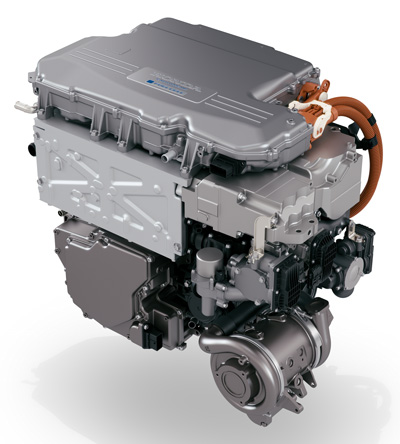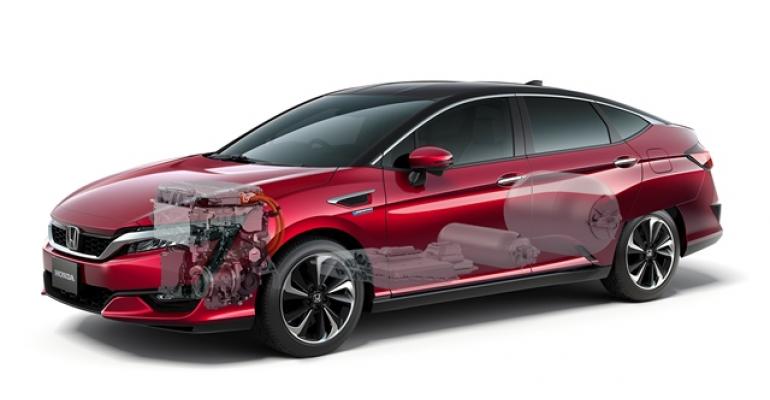SANTA BARBARA, CA – Honda engineers say with the all-new Clarity they’ve achieved fuel-cell powertrain dimensions similar to the space required for a 3.5L V-6 engine, opening the door to fuel-cell applications across the automaker’s lineup.
“If it can hold a V-6, it can hold a fuel cell,” Steve Center, vice president-environmental business development for American Honda, tells WardsAuto at a media drive program here for the ’17 Clarity.
Center’s comment comes as the Japanese automaker rolls out its third-generation fuel-cell vehicle, which it began leasing in California last December. The well-appointed, 5-seat sedan boasts an EPA-certified range of 366 miles (589 km) based on a 68-mpg (3.5 L/100 km) combined fuel-economy rating.
The redesigned Clarity fuel-cell stack offers a significant increase in output despite a 30% cut in the number of individual cells and a 33% reduction in the overall fuel-cell package. Along with a 20% thinner and redesigned cooling structure, the downsizing allows engineers to switch from a vertical to horizontal layout for the stack.
A 34% reduction in drive-unit height, combined with a 90-degree rotation of the overall unit, means the latest Clarity represents the world’s first fuel-cell powertrain contained beneath a standard sedan hood, says Stephen Ellis, fuel-cell vehicle marketing manager.
At the same time, Honda says the revised powertrain provides four times the impact resistance of the previous stack, Ellis notes.
Final figures put the powertrain at 27.6 ins. (701 mm) tall, 24.5 ins. (622 mm) wide and 34.1 ins. (866 mm) long, easily within the dimensions of Honda’s 3.5L V-6 at 28.3 ins. (719 mm) tall, 26.8 ins. (681 mm) wide and 34.6 ins. (879 mm) long.

Center says while the newest Honda fuel-cell powertrain makes it possible to install it in the engine bay of a Pilot CUV or Ridgeline pickup – or even the 4-cyl. space in a CR-V – he’s not announcing fuel-cell-powered versions of those models at this time.
Center also makes clear the Clarity badge is strictly for the current model and its environmentally friendly battery-electric and plug-in hybrid siblings that will debut in April at the New York auto show. Potential fuel-cell versions of the Pilot or other models would retain their branding with powertrain options called out.
“In the future we might have a Pilot with a V-6, a Pilot with a fuel-cell or a Pilot with a battery-electric powertrain,” Center explains. “But it would not be branded ‘Clarity.’”
Honda has modest volume goals for its latest FCV, topping 100 deliveries by the end of March and projecting some 50-60 leases per month going forward. So far, the vehicle is available only in California due to limitations on hydrogen-refueling infrastructure. There are 27 retail hydrogen-refueling stations in the state, according to the California Fuel Cell Partnership.
“You can’t flood the market – the fueling infrastructure can’t handle it,” Center says.
[email protected] @bobgritzinger





